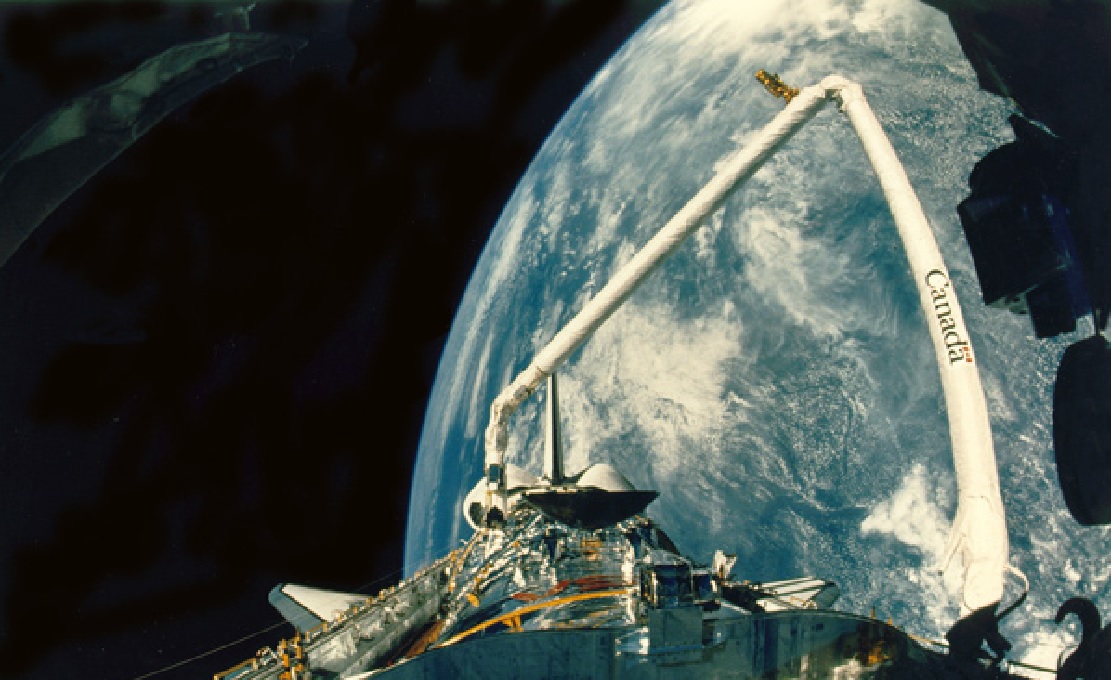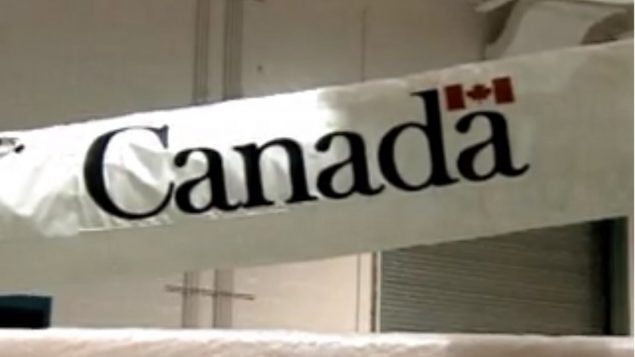In 1981 many of the world’s space scientists and engineers were watching what was going on in orbit around the Earth.
It was going to be a test of an incredibly innovative new space tool the Shuttle Remote Manipulator System. Very few outside a select group knew it by that name though. To almost everybody else it was the ‘Canadarm’.
With the creation of the American space shuttle, basically a giant reusable space truck, there was a need to be able to remove and place the cargo, whether that be satellites, or components or supplies for a space station, or even move astronauts around outside the vehicle.
Canada came to the rescue.
The answer was a large ‘crane’ but one that was highly dextrous that could move like a human arm with a shoulder, elbow, and wrist. It was remotely operated by an astronaut viewing operation through cameras at the wrist and elbow, and five computers to control astronaut controlled inputs.

The Canadarm being deployed in the cargo bay of the shuttle on this date in its first test. One of the cameras is seen on the top of the ‘elbow’ joint (NASA)
The 15-metre long 410-kg structure couldn’t support itself on Earth but in space it could easily move objects weighing over 100 tonnes. It would be protected from the harsh space environment by a multi-layer covering of goldized Kapton, Dacron scrim, a fibre glass outer covering with specialized heaters to protect components from the extreme temperatures of space which can range from -120C in shade to +120C in sunlight in orbits around Earth.
The Canadarm was developed by SPAR Aerospace- the Special Projects and Applied Research division of deHavilland had nonetheless been heavily involved in the revolutionary AV Roe, CF 105 Arrow jet interceptor programme.
The Canadarm was attached to the new space shuttle Columbia for the second shuttle flight (STS-2) designed as a test of the relaunch of the shuttle, its operation, and conduct several experiments with equipment in the cargo hold. The Columbia had blasted off on November 12, the first time a space vehicle had been ‘re-used”. On the 13th, the Canadarm was to be tested,
Canadarm performed flawlessly for four hours, its obvious Canadian flag emblazoned on the side for the world to see.

1990-04-25 – The Canadarm grapples the Hubble Space Telescope from the payload bay of Space Shuttle Discovery to place it into orbit. (NASA)
“Its remarkable performance produced a rush of relief and joy. We had done everything possible to make it work, but we had never been able to test it in a space environment. Seeing the arm deployed without a hitch showed that the eight years of hard work has paid off with a spectacular success.” Euphoria and elation erupted from the Canada and NASA teams, recalls Dr. Karl Doetsch, then Deputy Program Manager of the Canadarm project. “The first image, the now famous inverted V with the Canadian wordmark, displayed for the world to see: Canadian technology at its best. It was happiness, relief, and excitement all at once.” (Garry Lindberg, first Program Manager for the Canadarm, watching as a guest commentator on a special edition of CBC National News)
It would continue to perform flawlessly for 90 missions aboard other shuttles until 2011, along the way capturing satellites for repair, relaunching them, missions to the Hubble space telescope, helping to dock the shuttle with the MIR space station, and helping to construct the International Space Station.

2002-03-05 – A sliver of reflected light from the Earth’s horizon makes for a dramatic shot of the Hubble Space Telescope. The Canadarm assists the National Aeronautics and Space Administration (NASA) astronaut Michael Massimino with his duties. ( NASA)
A bigger more sophisticated Canadarm 2 was launched in 2001 known as the Space Station Remote Manipulator System (SSRMS). It too helped to build ISS and remains on board to help with maintenance tasks and movement of equipment and supplies and even support astronauts.
As for SPAR, with few contracts of the Canadarm level of sophistication, it resorted to repairing jet engines and other aircraft maintenance operations. The robotics division was sold off to MacDonald Dettwiler and Associates (MDA) in 1999.
additional information-sources
- Canada Space Agency: Canadarm
- Canada Space Agency: Historic first moves
- Canadian Encyclopedia: Doetsch/Lindberg: Canadarm
- Reference for Business: SPAR Aerospace (history)







For reasons beyond our control, and for an undetermined period of time, our comment section is now closed. However, our social networks remain open to your contributions.